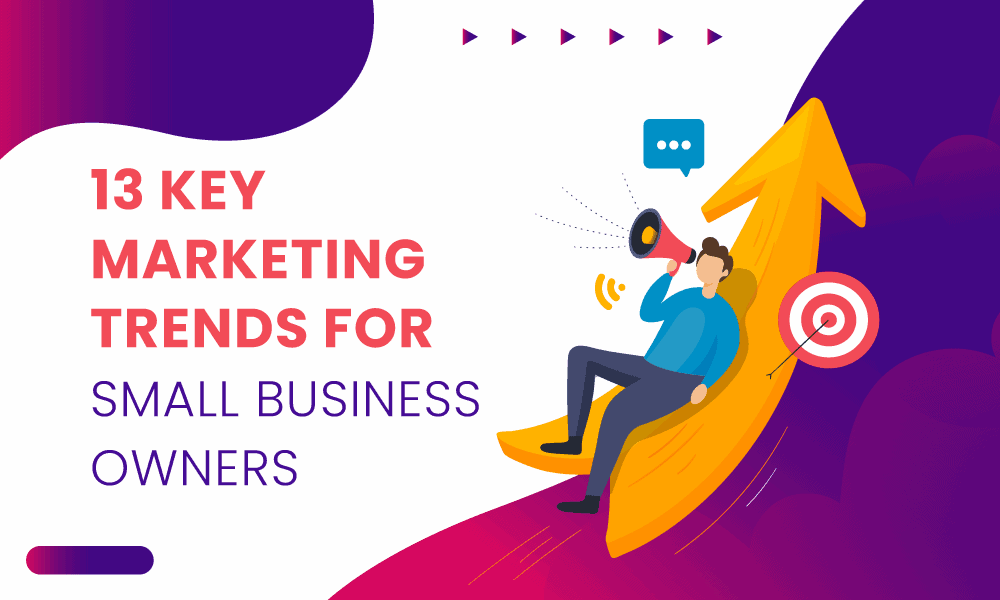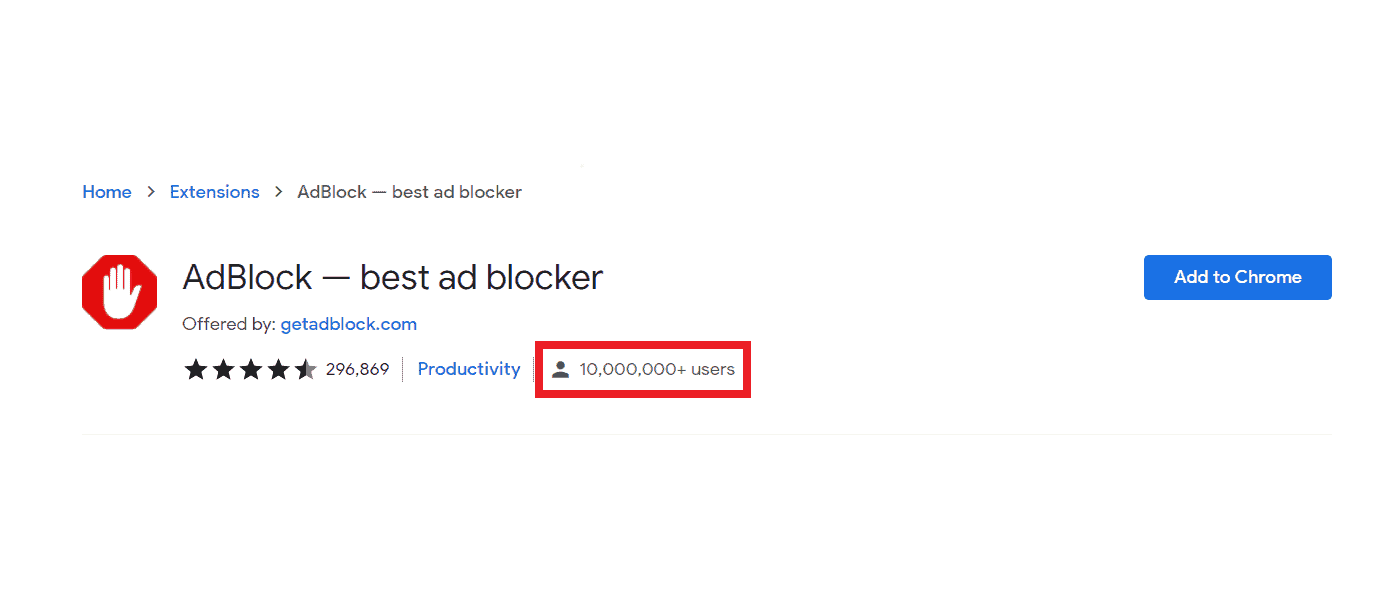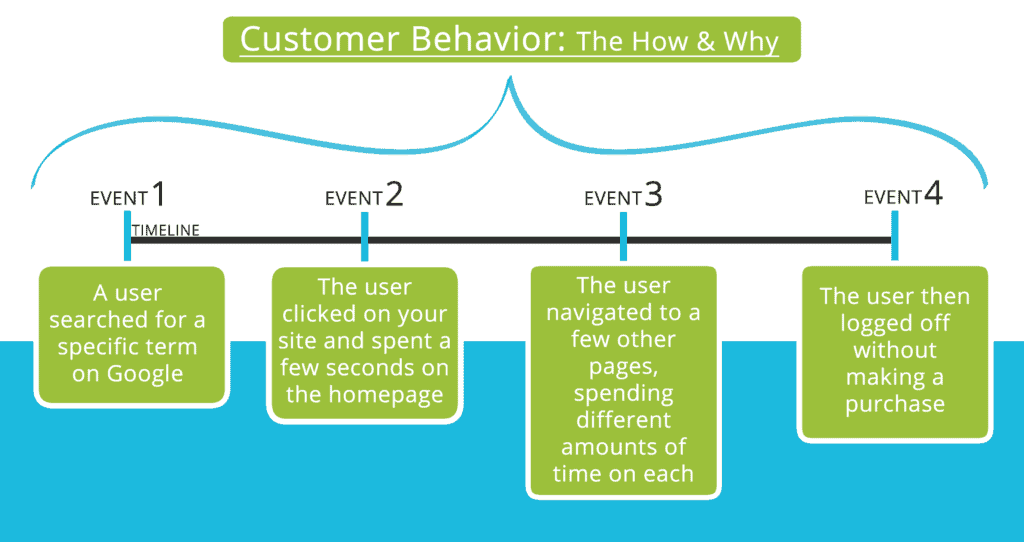If you’re a small business, it’s more important than ever to stay ahead of the curve and know what marketing trends are working right now.
I wrote this guide article to tell you about some important marketing trends that are happening right now.
A lot has changed in the past few years and if you’re not up-to-date, your business could be missing out on a lot of potential customers.
So sit back, relax, and let me walk you through what you need to know.
Table of Contents
#1. Mobile advertising could eclipse TV ad spend
Sales of low-cost smartphones are growing in developing countries. Penetration of high-speed Internet into lower-income groups will only go up.
The verdict is already out. Just look at this Statista graph showing a tremendous rise in people spending time on social media.

On average, people are expected to spend about 3 hours each day watching YouTube videos, browsing social media, and doing other online activities.
This number is only marginally less than the projected TV viewing hours.
As internet consumption grows, mobile optimization will become the norm. More brands will be looking to target mobile content consumers.
As a result, more advertisers will be preparing their teams for mobile ads and creating mobile content. That would mean more investment in mobile advertising strategy.
We all need to get serious about this — mobile advertising is on track to become a $350 Billion industry!
Mobile ads offer advanced targeting options — and a much more personalized experience than TV ads.
As brands realize the advantages of mobile ads, mobile-only ads may gain prominence. All companies would be looking to target audiences across demographics, time zones, and different times of the day.
Read more: 18 Powerful Marketing Strategies to Grow Business Faster
#2. Chatbots will become mainstream — and will be used for more
Chatbots are a great tool to maintain a personal touch and simultaneously enhance customer experience with automation.
We see numerous trends within the realm of chatbots. This infographic from Artificial Solutions goes into the depth of these trends.
Many enterprise and mid-sized companies have realized the value of chatbots and started using them. As chatbots go mainstream, 80% of businesses will want to incorporate at least one basic chatbot in their operations.
Furthermore, adoption will be fueled when sophisticated text processing technologies like AI and natural language processing are incorporated into customer service bots.
Chatbots are also expected to make life easier for business analysts. AI-powered chatbots will be plugged into BI engines to quickly discover previously unseen insights. Combined with a commonly used messaging channel, chatbots will become data assistants for BI analysts.
Customers can come at any time of the day to check your website. The biggest hurdle with deploying sales agents on a website is their availability; you would have to hire agents for non-business hours.
That would mean more off-hour incentives for them. Unlike sales agents, chatbots are available at all times during the day; no extra manpower is required to keep them operational. This factor alone will contribute to the growth of website chatbots.
Advanced AI bots that provide a conversational experience will also be used by businesses on their websites.
These chatbots will contribute to the growth of a new branch of UX, called Conversational UX (CUX). They will enable users to reach their goal or desired solution in the fastest ways possible with the highest level of user experience.
Companies will recognize the power of chatbots and find more non-traditional uses for them in their business workflows. These will go beyond plain B2C scenarios.
Expect enterprises to deploy chatbots for internal departments as well.
#3. Banner ads are well on their way out
Let’s face the truth — banner ads are annoying and we all know it. They’re intrusive to user experience and they’re often impersonal.
Some people use browser extensions (AdBlock Plus) to shut the ads. However, there are still enough marketers around who like to use banner ads.
Brands can and must do better than banner ads. There are other forms of marketing that are more personal in their approach. For example, content marketing, social media marketing, and email marketing.
Customers no longer like irrelevant ads that are blasted to them; you won’t get them to click the ad.
In the US alone, the rate of AdBlock usage has gone up steadily over the last few years.
It’s not getting better for mass advertising online. The popular AdBlock extension for Google Chrome has more than 10 million users:
Marketers always try to find more personal ways to reach their customers. Reduce the spending on banner ads and try better marketing strategies, like inbound marketing.
Read more: eCommerce Marketing: 8 Fantastic Strategies for Success
#4. Smart speaker users will carve out a niche for themselves
Smart speakers (Amazon Echo, Google Home, Apple HomePod) have become a way of life. They act as assistants to aid users with their daily tasks.
A study, called the Smart Audio Report (by NPR and Edison Research), found that more than half of smart speaker owners actually use them multiple days every day.
Kohler, a luxury bathroom and kitchen fittings company, launched Alexa-powered mirrors at the Consumer Electronics Show (CES) in the recent past. Innovations like these will continue to improve the quality of life of users. This will further drive smart speaker sales even faster.

Audio ads on home assistant devices may not be a current marketing trend. As more users start using these devices, all three major smart speaker providers (Google, Amazon, and Apple), will definitely look to monetize these channels by selling ads.
This opens up another avenue to get a brand noticed by its potential customers. In terms of creation, these ads will be much like the radio ads — short bursts of audio or ad jingles.
As they will be cheaper to create, it will be a great opportunity for marketers.
#5. Marketing will become truly omnichannel
Brands are built on the back of “consistency”. There’s consistency in visual design and there’s also consistency in marketing communication.
So, marketing across multiple channels (i.e., omnichannel marketing) becomes a crucial factor for brands. Omnichannel marketing includes the following platforms commonly used to share the marketing messages:
- Social media
- Blogs
- Pay-per-click ads
- Connected TV (CTV)
If you have a company and you want to establish it as a brand, you have to invest in all these channels. By engaging your customer across all of them, you maximize brand reach and thus the probability of sales.
You also provide a seamless customer experience. For example, a girl can browse for shoes on your website in her office and add her favorite pair to the cart. If she abandons the cart, she receives a reminder email when she reaches home. She can complete the purchase on your app via mobile.
A survey found that customer engagement across a variety of channels can help retain up to 89% of your customers, effectively making customer churn negligible.
On the other hand, poor omnichannel customer experience can result in a customer retention rate as low as 33%. You don’t want that!
Improving customer experiences is in fact a part of marketing, but it also means close-knitted relationships between designers, developers and marketers need to be built. Yep, we’re going full omnichannel here.
Because the fastest route to elevating the customer experience is by improving your UX across all your channels. That’s where usability testing comes into play. Brands tend to forget that the way people navigate their apps and websites has as big of an impact, if not a bigger one, as their campaigns do in attracting new customers.
So, learn the ways of your visitors and find out in which areas you can make improvements. Which channels could connect better? How can you speed up things on both sides using automation? Go through your own channels as if you were a customer, but definitely also ask real-life consumers about how they experience your business across channels.
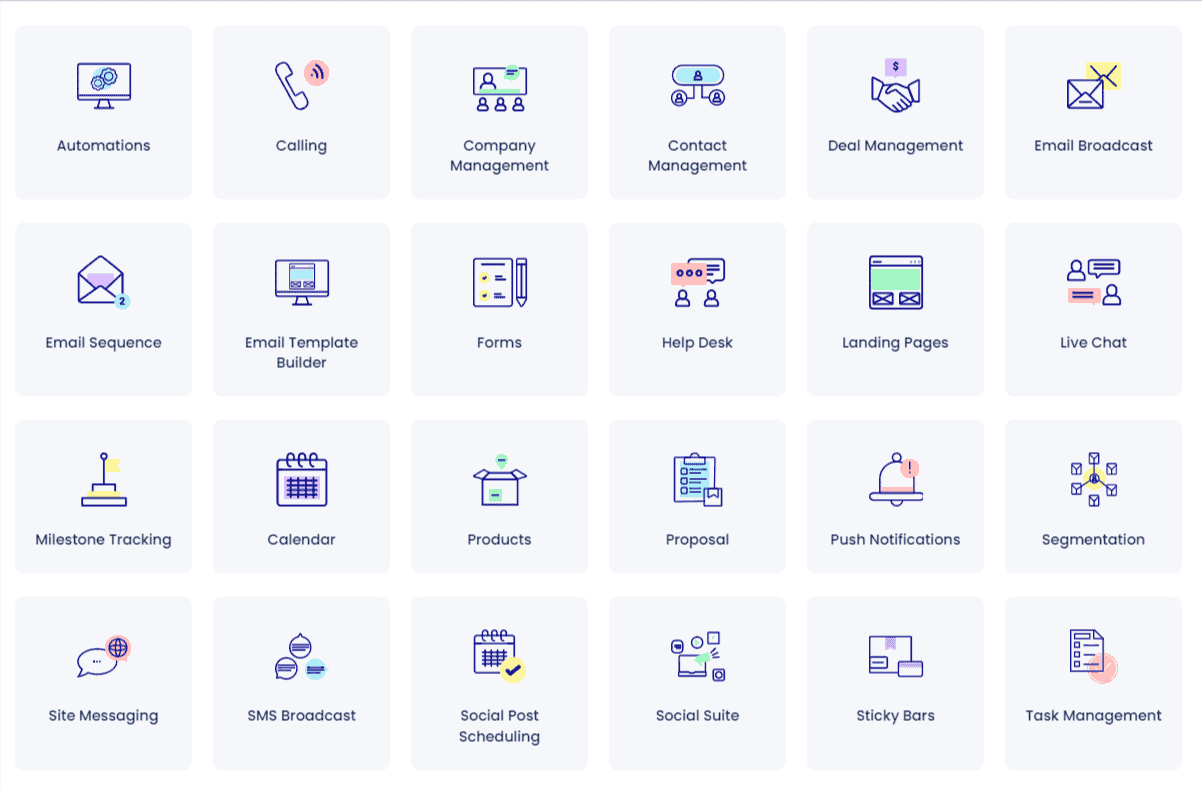
We have already seen how important marketing automation is for small businesses here at EngageBay.
Marketers looking to implement omnichannel marketing have to invest time and money in multiple tools. This may lead to inflated marketing budgets. This means if the money situation gets tight, one of these channels could take a massive cut.
Right now there are very few marketing automation tools that combine the ability to market across all channels.
There is HubSpot. As good as HubSpot is, it is also very costly for startups and small businesses. In fact, the dearth of affordable unified marketing automation & CRM software was the genesis idea behind EngageBay.
The coming years could well see more such combination tools and better integrations among existing tools.
Read also: Here’s What Micromarketing Means, and How It Can Help Your Business
#6. The demand for predictive lead scoring will surge
As mid-sized companies become enterprises, they will begin to capture even more data. There will come a time when analyzing this data will no more be possible with basic tools; you will need complex data analytics algorithms to get the best out of this data.
Predictive lead scoring is one of the emerging trends in marketing. It is regarded as a weapon for the salesperson. It is essentially a modern twist on more traditional lead scoring methods.
Lead scoring fuels the results using powerful predictive modeling algorithms. With predictive lead scoring, you can have:
- More accurately scored leads
- A richer lead profile for marketing-qualified leads
- A higher conversion rate because sales teams have more accurate and richer information about the lead.
The objective is to find only the most relevant leads. The higher the relevance, the higher the projected revenue for the company.
Adding AI to lead scoring, the patterns you unearth from your data will become sophisticated. In the long term, AI-powered predictive lead scoring may help us guess what exactly our potential customers would want in the future, based on their current behavior.
Currently, only a handful of tools provide truly advanced lead scoring features. These are expensive and often affordable only by large enterprises.
As companies begin to realize the benefits of predictive lead scoring, the adoption is only going to increase. Companies that are serious about their growth will be willing to invest in newer lead scoring methods.
If you want to take advantage of advances in lead scoring technologies, make sure to ask your marketing automation service provider about it.
You can also try EngageBay for free 🙂
Read also: 15 Simple Steps To Achieve Plumbing Marketing Mastery
#7. Voice search will evolve SEO into Semantic SEO
Research shows that 80% of queries are informational. Figuring out the intent of these searches has been the core focus of Google for quite a few years now.
So, if a user is looking for a list, he may use the word “list” or a few different variations of it. Google, by virtue of its numerous algorithmic advances, will extract a list from the most relevant search result.
This list will then be presented directly on the search result page. The user may not have to visit the actual site.
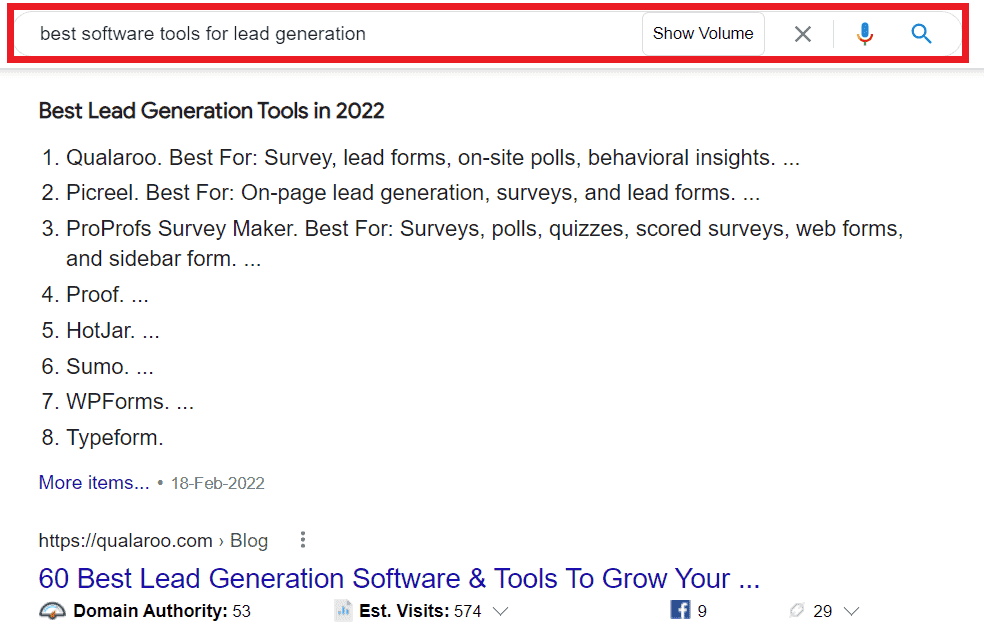
You can see from the screenshot here that the website of the software tool ‘Qualaroo’ is already garnering 500+ clicks a month for the query ‘best software tools for lead generation’.
This way, the reader can quickly take a look and decide whether or not they’d like to click on the article and read about the full list of the software tools.
Google is getting smarter like this. If organizations want to remain organically visible, they have to make Google’s job easier by focusing on topics and by implementing semantic SEO steps.
Semantic SEO search simply means you must identify keywords based on the real intent behind using them. Such keywords will become the driver of the performance of your content marketing.
Why is Semantic SEO so important?
As I mentioned earlier, smart speakers are being used more than ever. And so, voice search will grow exponentially on the back of smart speaker sales.
This brings a special focus on how SEO is done. It won’t be simply based on keywords anymore. The next level of SEO will be intent-based and that’s where Semantic SEO will come in.
How to prepare for the intent-based search trend?
You can create content around topics and not just individual keywords. These topics may be covered in one or more pieces of content.
Cornerstone content is the easiest way to create posts to rank for topics instead of keywords. You could use any of the powerful competitor analysis tools (like Ahrefs) to identify the kind of posts generated by your competitors.
Group these posts and you have the intent of your audiences.
#8. Video marketing will continue to rise
Videos are really easy to make. Branded videos with graphics can be a little different to produce. Whatever the type of videos, they generate incredible engagement.
There is enough evidence to support the video. Wyzowl is a company producing animated explainer videos. It found that videos improved the conversion rate for more than 70% of companies.
Yet another engagement company Invodo discovered that over 50% of e-commerce customers felt more confident if they saw a video on the product purchase page.
Marketers looking for solid engagement numbers can safely rely on numbers. There may be an illusion of videos among marketers. Many think videos are easy to produce because they’re cheap.
Yes, they are easier to create but creating a well-planned video will always work better against your competitors. Like all other types of content, the video will also need a strategy; you will have to follow all the basic rules of video marketing.
In the coming years, live videos will become a popular way to connect in real-time with your audiences. All major social networks provide live video options. There are Facebook and Instagram live videos. Apart from that, you can set up live streaming on YouTube and Google Hangouts.
Like I explained earlier, any kind of video marketing requires good planning.
Some types of videos you can do live are:
- Interviews and QnA sessions
- Product launch or press release
- Behind-the-scenes videos
- Breaking news videos
While videos can help you talk to a large audience, personalized 1:1 video messages can also be a hugely effective marketing tool.
You don’t need to create a different video for each and every customer, you just have to send it to them individually. Customers love this personalized attention and your engagement shoots right up.
Some ways to use personalized one-on-one video messages are:
- Free content
- Support via tutorial videos
- A simple thank you message
This might not seem like a direct benefit, but modern technologies have made video an asset for your search engine ranking.
Google also shows video results whenever indicated by the user’s keywords or search intent. Since 2017, Google has been showing previews (autoplay) as you scroll through the video carousel on a mobile search result page.
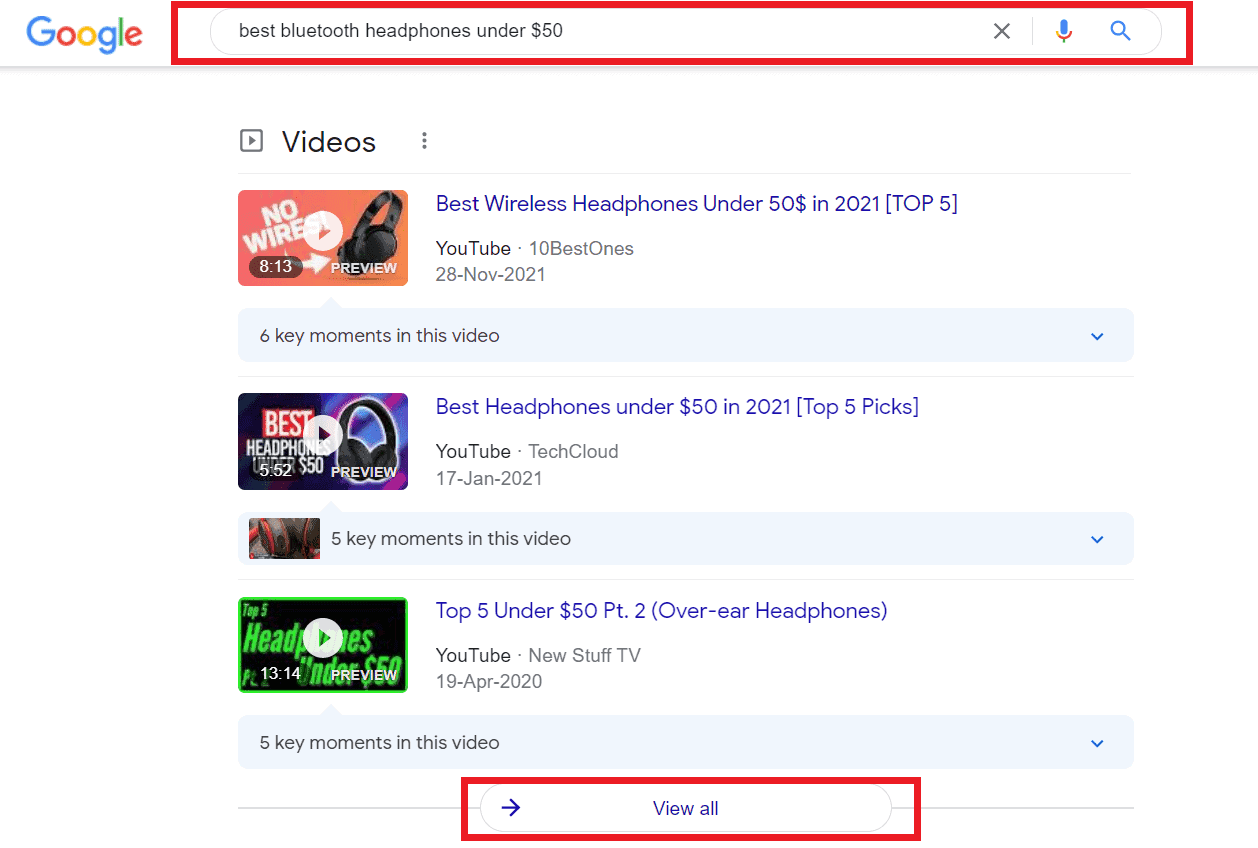
As you can see from this screenshot of a search results page on Google, many videos are ranking well for a query related to ‘best Bluetooth headphones’. Sometimes you see these video suggestions on the top, and sometimes they show up after the first few results.
If you click on ‘View all’, Google takes you to its ‘videos’ page, which shows only video results for the query.
Small business owners and marketers for emerging brands can take advantage of the uptake in video adoption, as internet speeds increase around the world and more and more people have access to mobile devices.
Read also: Proven Salon Marketing Ideas to Attract More Clients
#9. There will be more immersive marketing content with AR and VR
Augmented Reality (AR) and Virtual Reality (VR) are two of the most recent trends in marketing.
Pokemon Go was probably the coolest application of Augmented Reality (AR) in pop culture. It grabbed headlines all over the world and showed the true power of AR.
VR takes the power of video and hands it over to the customers; the experience is delivered on a mobile device and consumed via a VR headset.
Both these types of experiences are extremely immersive. They deliver sensory wonderment — a guaranteed driver of consumer engagement.
Marketers like those at IKEA have incorporated VR through a shopping app called IKEA VR Experience.
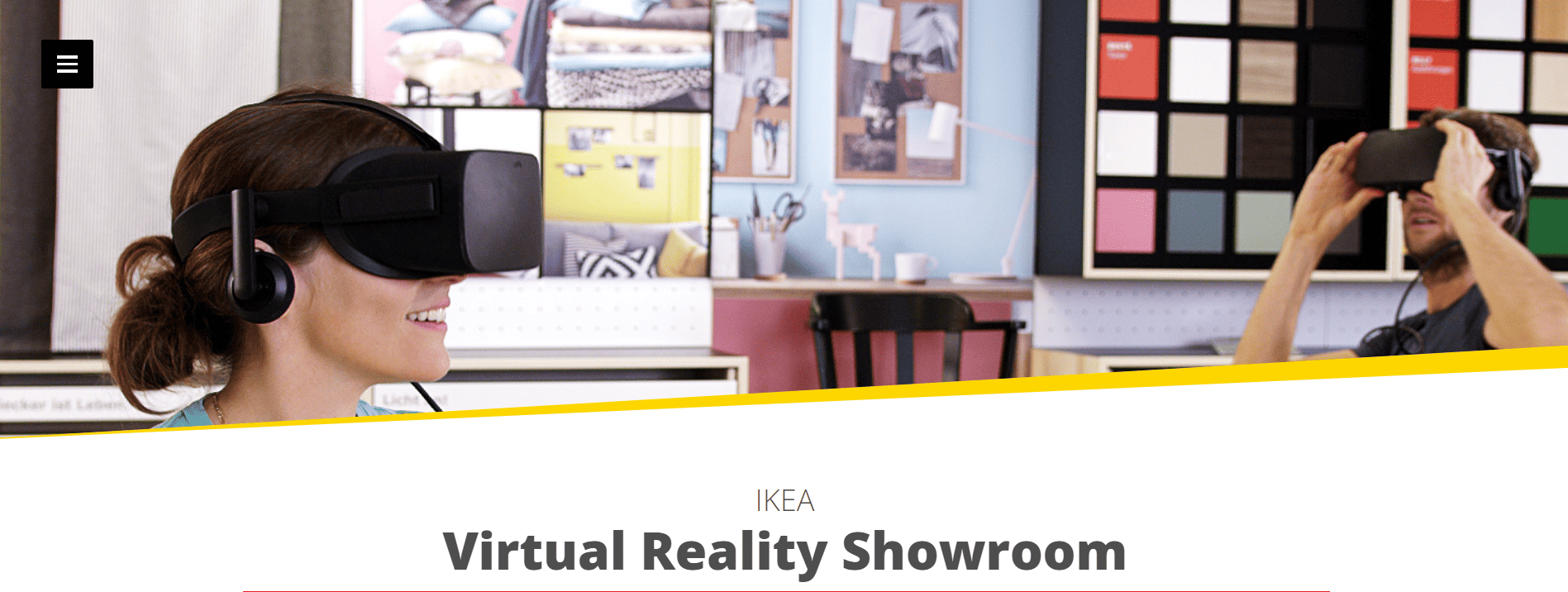
Starbucks opened a brand new roastery (a megastore) in Shanghai which can be toured with its AR app. Volkswagen has also experimented with VR with its own app.
In the future, we will see many more brands getting their hands dirty with virtual reality and augmented reality development technologies to get better attention and engagement from potential customers.
You need to jump in on this trend too!
#10. Content will come from all teams across the organization
Content will continue to dominate marketing in the future. It’s the most suitable form of marketing for the internet generation. Note that blogs will have their place but content marketing will become multi-channel to incorporate other forms.
Transparency and authenticity will become the cornerstone of marketing as we go ahead.
The way brands can come across as more relatable is to combine perspectives of serving the customer. Each team has a different role to play in serving the customer and hence a different perspective on what “value” they provide for the customer.
As brands aim for more authenticity and transparency, they will leverage these multiple perspectives by roping in every customer-facing department for content creation.

The marketing team will then become a content facilitator or an editor to keep control over what goes out. Other teams, such as sales, support, and C-suite executives will help ideate and create content.
This will allow your marketing team to generate truly high-value content with less effort.
Marketing content of this kind can be more relatable for your existing customers and potential clients, and if it sits well with them, they can become your brand advocates by spreading the word.
When that happens, your business can reduce Ad Spend and other expensive marketing strategies like hiring influencers to promote the brand.
👉Unlock the full potential of your marketing efforts with our guide on the most effective strategies! 🔓
#11. Marketing content will be centered around ‘micro-moments’
Introduced in 2015 by Google, micro-moments are new ways of looking at customer acquisition by understanding four key points in the customer’s purchase path (see image below).
Brands will have to update their marketing mix and include these moments as they are the key to effective marketing strategy.
As modern consumers continue to rely on their smartphones in each of these micro-moments, brands will incorporate them deeper into their content creation strategy.
To be available for customers in these micro-moments, brands will have to focus strategy on two things:
- Creating content highly targeted for each of these moments. For example, a quick FAQ page to satisfy the customer queries about payments and refunds during the “I-want-to-buy” moments. As a result, all types of content, no matter how big or small, will acquire equal importance.
- Delivering the right content in the right format and without wasting customers’ time. To do this, brands will diversify content creation and use audio/video alongside text to deliver information quickly. Transcribed versions of all audio/video content will also be needed for quick search.
#12. Brands will find influencers that align with their values
In the early days of influencer marketing, brands used to rely on numbers when selecting an influencer because numbers were easily visible.
One of the latest marketing strategies to be highlighted now is that selecting influencers won’t just be a numbers’ game.
As business owners begin to understand influencer marketing better, they will focus on finding influencers that align with their own brand values.

This will bring influencer personalities into focus while selecting influencers. To be smart in finding the right influencers to work with, ask questions like: ‘Does this account cater to the audience we do?’.
This may lead to certain influencers with lower follower count than others being chosen purely based on how well they suit your business.
#13. IGTV’s vertical videos will continue to rise
Instagram has two ways to promote IGTV videos:
- Users can post IGTV videos to their timeline. The first minute can be viewed in the regular timeline post. After that, your followers will see the video paused with an option to “continue to watch on IGTV”. The key here is that IGTV videos are played right inside the Instagram app; separate app installation is not required.
- IGTV videos have their own section on the user’s natural timelines. Stories are visible on the top row of content, but after scrolling down to a certain length you see a separate section specifically for IGTV videos.

Instagram was already popular for the way it made use of visual media. Now with videos baked right into the platform, brands will have to create vertical videos to compete with other brands on IGTV.
Long-form video content and storytelling will, therefore, take center stage in the coming years as Instagram continues to push forward as an all-encompassing visual platform.
Marketing managers across all verticals (especially consumer-facing brands) will be using IGTV as an important part of their new marketing strategy.
You need not be an influencer to make IGTV videos. For your own business, think about anything that may be relatable or ‘likable’ for your audience. Don’t obsess with engagement numbers right from day one.
Focus on creating content that’s engaging, and engagement will follow.
Wrapping Up
To conclude, small business owners and marketers who have the challenge of promoting new or small businesses need to prepare a multi-pronged marketing strategy.
It used to be that one thing well done would get big results. Today, you’re better off trying a dozen things to see what sticks with your audience, because it’s hard to tell where your audience is going next.
What do you think about our list of 13 marketing trends for small business owners? Tell us in the comments.
If you liked what you read, please consider sharing the post.
If you’d like to know how EngageBay can help you with your marketing efforts, sign up for free and we’ll give you a call!
